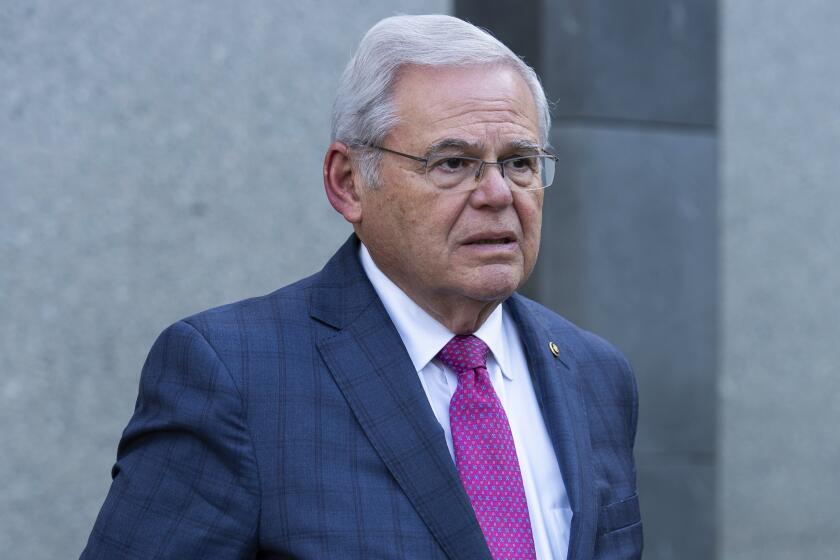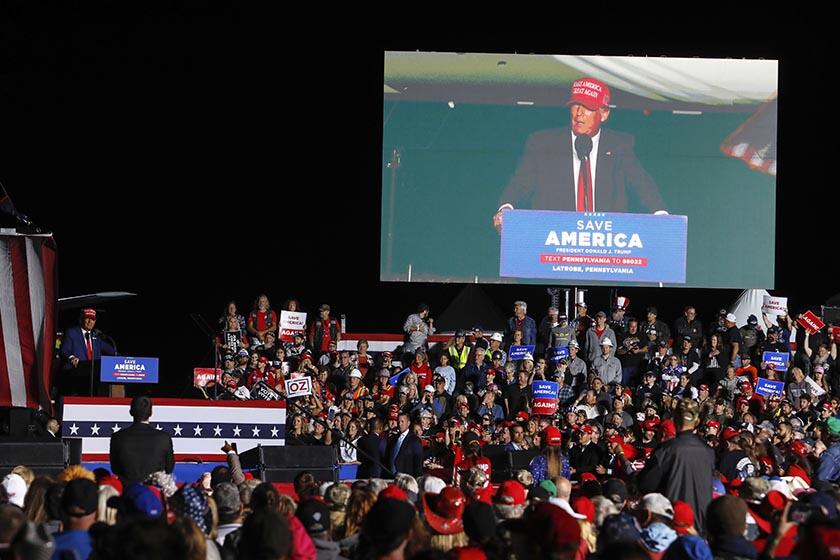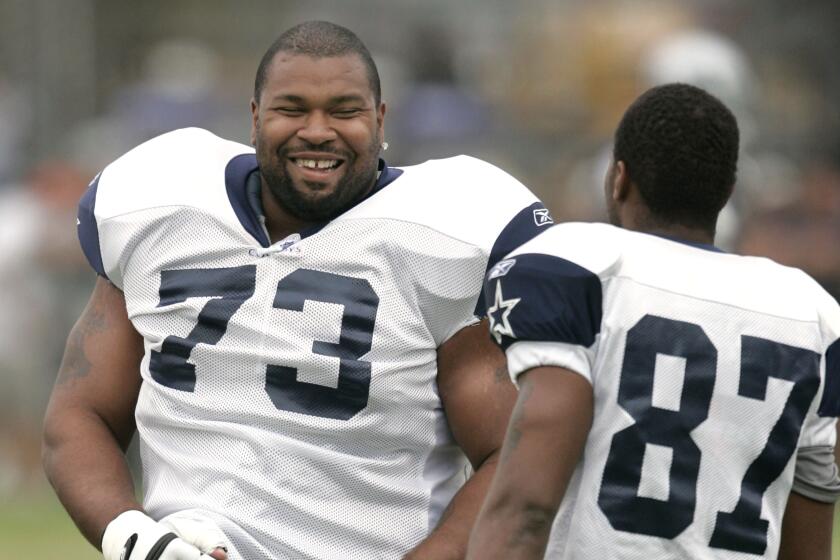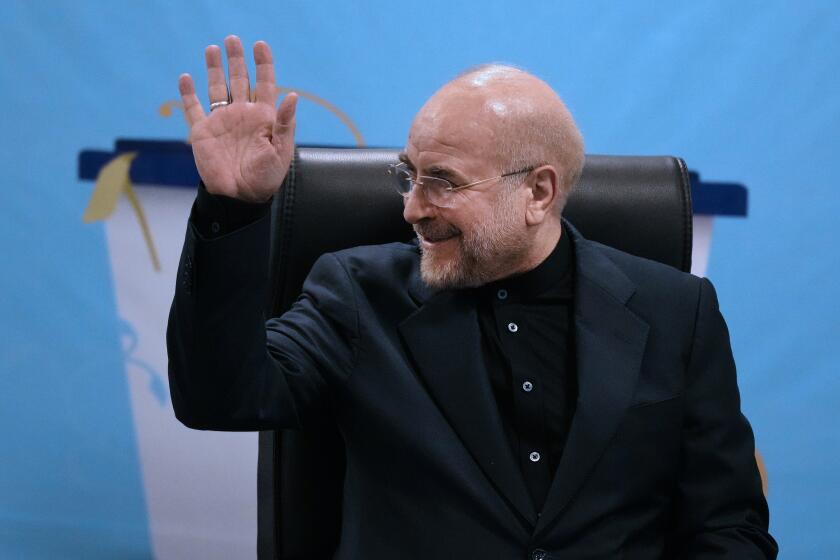CHINA: THE GIANT AWAKENS : Ancient Power Steps Into Asian Spotlight
A legacy of grinding poverty left by centuries of stagnation, chaos and isolation is finally fading. An increasingly self-confident nation now seeks a place in the world worthy of a country that is home to more than one-fifth of humankind.
“There lies a sleeping giant,” Napoleon once said of this ancient land. “Let her sleep, for when she wakes she will shake the world.”
For better or worse, China is awakening.
Tens of millions of peasants have left the land for factory and construction jobs, powering a transformation of China’s coastal provinces and major urban centers. Linked with foreign capital and skills, their low-wage labor makes China a major force in world trade.
China’s spectacular economic growth already exerts profound effects in all East Asia and the entire Pacific Rim. And in the overpopulated countryside of this country’s vast interior are hundreds of millions more would-be factory hands who, if properly employed, can keep the boom going for decades.
In recognition that China has grown to be of immense importance not only geopolitically but economically as well, the International Monetary Fund last month revised its method of measuring the size of national economies and decided that China already has the third-largest economy in the world--valued at $1.7 trillion in terms of equivalent purchasing power.
By some calculations, China’s could be the largest economy in the world in as little as three decades. Output has grown at an average annual rate of 8.4% in the past seven years. It spurted 12.8% last year and is set to jump another 10% or so this year.
China’s economic expansion is likely to have considerable staying power, for it is based on unlocking the talents and energies of a people who had been enervated by the old system of state controls. Material incentives, labor mobility and rational prices are still rather new to China, and the full effect of their gradual implementation has yet to unfold.
*
A flood of reasonably well-made consumer products already flows off assembly lines at modern, foreign joint ventures, at rural township enterprises and at large state-owned factories newly responsible for their own profits and losses. Small luxury services like pleasant sidewalk cafes or street-side car-washing are beginning to sprout in major cities. Shiny new department stores are stuffed with goods, while markets overflow with fruits and vegetables. Hundreds of high-rise office and apartment buildings have sprouted in Beijing and other major cities.
“If China continues to develop the way it is now, its role in the world economy will become stronger and stronger,” noted Jiang Zhongxiao, a Stanford University-trained economist at the Chinese Academy of Social Sciences in Beijing. China’s influence will mainly be felt through its fast-expanding trade, Jiang predicted.
Yet the rapidly modernizing parts of China are home to, at most, 400 million out of the country’s nearly 1.2 billion people. China is on the road to becoming two nations, politically united but economically divided, with roughly one-third of its people in prosperous coastal and urban areas and two-thirds in isolated villages and towns of the interior. Life may continue to gradually improve even in the poorer areas, but only the modern third will have real weight in the world.
Some of China’s neighbors--and strategists in Washington as well--worry whether its growing economic strength will lead to a new political and military assertiveness. Beijing’s claim to sovereignty over both Taiwan and the South China Sea adds urgency to these concerns.
The governments of other Pacific Rim nations realize that something incredibly important is unfolding here. But where will it lead? Do old policies toward China need to be reassessed? China’s awakening inspires both excitement over new opportunities and fears of what the future could hold.
*
A new openness here allows powerful outside influences--including many from America--to come flooding in, undermining old ways. Everything from blue jeans and running shoes to the Goddess of Democracy statue erected on Tian An Men Square in 1989 reflects the subversive allure of American culture and ideas.
Most observers in Asia believe that as the old Communist system fades away or collapses, it is likely to be replaced not by Western-style democracy but by something closer to the authoritarian structures that brought the early phases of modernization to Taiwan and South Korea. Yet China’s huge size and unusual history ensure that its path will be unique.
China’s attempt to reform communism is a journey into uncharted seas. Its leaders have made it abundantly clear that they intend to preserve an unchallengeable Communist Party dictatorship, even as they pull back from trying to dominate every detail of economic and social life.
What could well emerge is a kind of corrupt, state-dominated quasi-capitalism in which personal connections, bribes and kickbacks count for as much as the rule of law or the marketplace. Such a system might even be dynamic, at least compared to what preceded it, but it is unlikely to be pretty.
The combination of Communist Party rule and market economics may be untenable in the long run. But as long as it lasts, it creates endless opportunities for corruption as power-holders demand payoffs for nearly everything.
Local bureaucrats sell business permits, police sell passports, factory personnel offices sell positions on waiting lists for low-rent housing. Graft has seeped into every corner of society. Government control over the media and police-state suppression of dissent ensure that complaints do not get out of hand.
“We’re seeing . . . one of the largest experiments of a movement of an economy away from a centrally planned one the world has ever known,” noted Robert Broadfoot, managing director of Political & Economic Consultancy Ltd. in Hong Kong. “The West is assuming this is going to be capitalism as the alternative. Now, that’s a very big leap in faith. I’d say that that’s probably not going to be the case at all. I think it’s going to move to a system of even more personal connections and ‘Wild West’ cutting of deals than ever before. . . . China’s a great game (for Western investors), but it’s a dangerous one.”
There is also the question of whether China can maintain at least a modicum of political and social stability as it goes through the wrenching process of modernization.
Jiang predicted that as China becomes more integrated into the world economy, its domestic situation “will become an extremely important factor in world stability.”
“If China’s economy is unstable or big social problems erupt, then the economics and politics of neighboring countries will surely be affected,” Jiang said. “The key point is that China has a huge population. No country could stand to accept even a small percentage of China’s people (as refugees or economic migrants).
“Japan is especially worried about China’s economy going sour. But it’s also afraid of China’s economy developing. Japan simply can’t endure it if China’s economy somehow collapses and everyone wants to go there. But it’s also worried that if China develops, then it faces another competitor.”
*
While China is still far behind Japan in terms of financial strength in the world economic system, there are about 50 million generally well-educated and prosperous ethnic Chinese outside China’s borders, primarily in Taiwan, Hong Kong, Macao and Southeast Asia. These are people who understand capitalism and have at least some residual feelings for their motherland. Many are happy to invest here not only for profit, but also out of a desire to see China achieve its century-old dream of wealth and power.
Market-oriented reforms have been able to touch off sustained expansion partly because things were done so poorly under the old system. China started its reforms 15 years ago from an extraordinarily low level of economic performance. The current boom gains momentum simply from discarding bad practices of the past.
Under the old system of central planning and fixed wages, store clerks gained nothing from selling goods, waitresses got nothing from making their restaurants popular, even factory workers were unconcerned whether their products sold. The result often was rude service, shoddy workmanship and a pervasive attitude of meishi --”it doesn’t matter.” These things still infect China today. But there are more and more places where there is a connection between performance and reward.
The atmosphere at Sam Wo Advertising’s neon-light factory in the southern city of Canton, capital of Guangdong province, is typical of the places where China’s economic boom is really being powered.
There, in a stifling hot, metal-roofed penthouse sweatshop, Li Jianmin, an 18-year-old former peasant, works 10 hours a day, seven days a week, soldering wires to neon lights.
At nearby benches, earnest colleagues use blowtorches to twist glass tubing into Chinese characters for store signs and advertising slogans. Across the hallway is a simple workers dormitory.
The plant’s employees are paid by the piece. They have no union. Their boss, a private entrepreneur, can fire them at will. They work with a seriousness of purpose--almost a quiet desperation--seldom seen at China’s traditional state-run factories. They want money, and the faster they produce neon lights, the more they get.
For the past year, Li has done little but work and sleep inside this building. But rather than feel sorry for himself, he seems thankful. Compared to what he left behind, he has struck it rich. “I earn more than 1,000 yuan ($175) a month,” Li said with pride. “In my village, I would only be able to earn a few hundred. I want to work here for many years.”
Li comes from one of the poorer regions of Guangdong. In China’s deep interior, home to hundreds of millions of people, conditions are far worse.
“After the (post-1979) reforms in the southern part of China . . . the people there got richer and richer,” noted Tian Xiangfeng, a city official in Yanan. This town in northwest China’s Shaanxi province was the key revolutionary base area for the Communists from 1937 to 1947. Isolated and poor then, it remains so today, although on a somewhat higher level. It typifies the vast mass of China that foreign visitors seldom see.
Asked to compare his city with the prosperous southern coastal provinces, Tian replied: “Everybody thinks they’re at least 30 to 50 years ahead of us.”
Indeed they are.
The future China of wealth and influence is taking shape at places like Procter & Gamble (Guangzhou) Ltd., a U.S.-China-Hong Kong joint venture in Canton. The firm produces shampoo, soap and similar products for both the domestic and international markets. It is one of more than 70,000 foreign-funded firms in China, with total investments exceeding $35 billion, according to official figures. Most of these firms are from Hong Kong, Taiwan, the United States and Japan, including some Hong Kong-based firms that are actually controlled from China.
Procter & Gamble’s Canton operation had total sales last year of 460 million yuan ($80 million) and expects to hit 700 million yuan ($122 million) this year, according to Huang Hua, 33, associate general manager.
One-third of the joint venture’s work force is composed of recent college graduates. They are spread through all parts of the firm, including production and sales.
“We hire so many college graduates and invest so much in training them because we’re thinking of the long term,” Huang explained. “In 10 or 20 years, when we’re bigger, we’ll have many very capable, experienced and well-trained young people who can handle the increased business.”
*
Huang, who previously worked as an adviser to a local government agency involved in setting up the joint venture, is an enthusiastic convert to Western ways.
“When U.S. companies invest in China, they bring modern technology and management methods,” he explained. “There’s marketing, production, purchasing, sales, delivery and systems management. From China’s point of view, we can learn a lot from this. Joint ventures bring many new concepts of marketing, such as respecting the consumer, developing products in line with consumer demand and viewing the consumer as most important.”
The latest acceleration of market-oriented reforms in China was sparked by a journey to Guangdong early last year by China’s senior leader, Deng Xiaoping. On his southern trip, he made a series of speeches to local Communist Party leaders praising the relatively prosperous region’s quasi-capitalist development and calling for even faster progress.
“Guangdong’s development in the 1980s was based on a market economy, but you couldn’t say this is what you were doing,” explained Liang Guiquan, an economist at the Canton Academy of Social Sciences. “If you did, people would call you a ‘capitalist,’ and this was a very bad hat to wear. But on his southern trip, Deng said markets can be used by socialism as well as by capitalism. This got rid of the label.”
At the Chinese Academy of Social Sciences in Beijing, Jiang, the economist, and a team of researchers have estimated that China is likely to average 9% annual growth from 1991 through the year 2000, about 7.5% annual growth the next decade and 6.5% annual growth in the subsequent decade. Using a current estimate of China’s gross domestic product considerably smaller than the International Monetary Fund’s new figure, they still predict that the size of China’s economy will match that of the United States in the year 2020.
That prediction, Jiang noted, is based on four assumptions: that China enjoys domestic stability and is not faced by foreign invasion; that it continues to open up to the outside world; that the rate of technical and scientific upgrading matches that of the 1980s, and that it implements a market economy.
No one can be sure whether those assumptions will be met. Top-level political battles during the post-Deng succession could throw China into crisis, possibly even threatening Communist Party control.
*
There is no way to really measure the feelings of the Chinese people toward their rulers. Scattered reports seep into Beijing of peasant riots against local tax levies. Many urban intellectuals despise their country’s leaders. The massive show of support by ordinary citizens of Beijing for the student-led pro-democracy protests of 1989 provides another measure of people’s feelings. Something even more dramatic in the future cannot be ruled out.
But in the wake of the massacre that ended the Tian An Men Square protests--at a cost of about 1,000 lives, according to Western intelligence estimates--the vast majority of Chinese citizens are too busy making money and too frightened of the consequences of political action to try to change the system. Also, even many who condemn the party fear that chaos would erupt should it fall.
While the sudden collapse of Communist rule in some cataclysmic upheaval cannot be ruled out, most analysts believe that a long and gradual transition is more likely as Deng and other octogenarian leaders finally are replaced by younger, more technocratic successors. The transformation of Taiwan over the past half-century provides a compelling model of how such change could take place.
Nationalist Party rule in Taiwan--which reverted to Chinese control in 1945 after 50 years of occupation by Japan--got off to a shaky start.
A minor clash between authorities and native-born Taiwanese grew into rioting Feb. 28, 1947. The riots were brutally suppressed, and in subsequent days large numbers of people thought capable of leading resistance to the Nationalists were rounded up and executed. As many as 28,000 people died in the slaughter, according to an estimate made last year by a team of scholars appointed by the Taipei government to investigate this dark page in the island’s history.
Two years after the massacre, the Nationalist government itself fled to Taiwan, having lost to the Communists in a civil war on the mainland. It ruled with an iron hand.
*
The Nationalists banned organized political opposition, focused on economic growth and gradually created an educated middle class. Beginning in 1987, they finally lifted martial law and opened up the political process. Today, Taiwan is a functioning democracy, the once-hated Nationalists remain in power and Taipei still talks of ultimate reunification with the mainland--once it too is democratic.
Taiwan’s experience “is relevant because it’s a Chinese society and (because) you see a one-party dictatorship transforming into pluralism, first economically and then slowly politically,” commented Joseph Cheng, dean of the faculty of humanities and social sciences at City Polytechnic of Hong Kong.
“We will probably see such changes in China in 20 to 30 years,” Cheng added. “First of all, we need a new generation of people--those who were educated after the (1966-1976) Cultural Revolution. . . . China needs a middle class. It needs time to develop freedoms such as freedom of the media and rights of association.”
Once Deng leaves the stage, however, power struggles within the top leadership, perhaps linked to the inherent tensions of carrying out market reforms under a Communist dictatorship, could lead to events that would make the 1989 Beijing massacre seem minor by comparison.
Still, so long as the army does not split into geographically based rival factions, whoever controls the army will control China, as has been true since 1949. The top ruler could have roots in the party or roots in the army, but as Chairman Mao Tse-tung noted many decades ago, the power comes from the barrels of guns.
China’s army “is the most unified body in China,” observed Broadfoot, the Hong Kong-based analyst. “It’s the only body with the infrastructure and communication systems to coordinate their activities on a national scale. . . . I think two features will hold China together . . . one will be the PLA (People’s Liberation Army) and the second will be a feeling of being Chinese.”
Even if a new regime comes to power that no longer calls itself Communist, a continued drive for economic development under authoritarian leadership is probable. Emergence of a nationalistic, successfully modernizing military dictatorship that gradually relaxes political controls can probably be considered an optimistic scenario.
Darker outcomes include the chance that modernization, and the falling birthrates it normally brings, will fail to outrace China’s population bomb--and that by the mid-21st Century, population here will hit 3 billion. “We don’t rule out this possibility,” admitted Jiang, the economic forecaster. “If this happens, China doesn’t have much hope.”
China sleeps no more. But in what way will it shake the world?
Times special correspondent Christine Courtney in Hong Kong contributed to this article.
More to Read
More to Read
More to Read
Start your day right
Sign up for Essential California for news, features and recommendations from the L.A. Times and beyond in your inbox six days a week.
You may occasionally receive promotional content from the Los Angeles Times.






